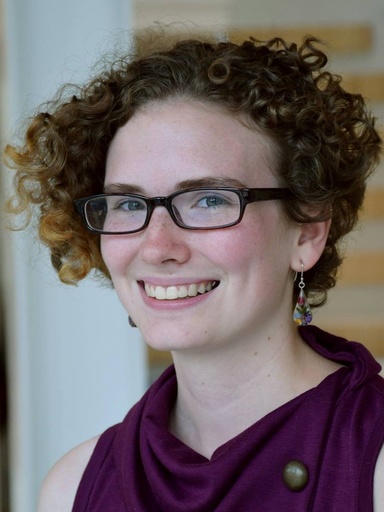
Motivated by her experiences growing up with an older brother with Down Syndrome, Computer Science doctoral student Flannery Currin aims to go into a career to help people thrive. When she was younger, she anticipated entering a field like occupational therapy or speech-language pathology until she discovered an interest in computer science. Currin reconciled her desire to help those with disabilities and her interest in computer science by studying human-computer interaction at the University of Iowa.
Technology has grown in scope to help many people, but accessibility can be lost in the design process. Assistive technology like Siri, Alexa, and Google Home can fall short when used by someone who struggles with speech. Currin recalls moments where her brother had trouble utilizing voice-activated technology due to his speech and understanding of how the device spoke back to him. Exploring universal design for people with intellectual disabilities is an ongoing goal for Currin.
“Growing up, I have seen how technology is not designed for my brother,” Currin says. “He interacts with technology in ways that I would never think to and seeing what he can contribute in that way has motivated me to look at accessibility.”
During the 2021-2022 academic year, Currin participated as a trainee in the Iowa Leadership Education in Neurodevelopmental and Related Disabilities Program (ILEND) through the Center of Disability and Development which provides interdisciplinary opportunities to enhance the understanding of individuals with disabilities and the barriers they face. ILEND recruits graduate students as well as family, community, and self-advocates to participate in bi-weekly seminars that culminate in an interdisciplinary project involving all of the trainees, a smaller-team research project, and discussions with state and federal legislators.
“Something that is really important in my subfield of human-computer interaction is interdisciplinary work and ILEND gave me plenty of diverse experiences,” Currin says. “I have a lot of expertise in the tech side of topics, and this program gave me valuable knowledge in other disciplines as well as a network of people I can now reach out to with any questions.”
Computer Science graduate students don’t typically fit into the disciplines established in the ILEND program, but Currin landed a spot as a community trainee. During the interview process to enlist in the program, Currin spoke to how the topics and projects offered could benefit her current research and goals that extend beyond the borders of her computer science program.
“Because of my graduate program title, it was a little hard to find where I fit in for ILEND,” Currin explains. “In the interview I spoke about my research topics and how this program is beneficial to me as a sibling of someone with a disability. I have these broad interests in family-centered care, accessibility, and how things are not designed for people with developmental or intellectual disabilities.”
Currin’s time in the ILEND program was made possible by the stipend and academic support received from her 2020 NSF GRFP fellowship. The fellowship allowed her time to exclusively focus on gaining transferable and interdisciplinary skills to aid in her research.

Department of Computer Science
Currin’s current research in human-computer interaction involves observing how children interact with technology through social play. Currin works with Juan Pablo Hourcade, professor in the Department of Computer Science, who led a group of students in the development of Story Carnival, a collection of technologies designed to lower barriers to evidence-based activities to enhance the executive function of 3–4-year-old children. These evidence-based activities include pretend-play, improvisation, and interactive social dialogue and negotiation.
“Story Carnival consists of interactive visual stories developed to promote social make-believe play, a play planner app to help children transition from experiencing a story to role playing as one of the characters in the story, and tangible voice agents controlled by adult facilitators to keep children engaged in play,” Hourcade explains.
Currin studies how both the adult is using the technology to encourage play, and how children are using the technology to initiate social play. Currin takes a special interest in shy children, defined by Currin as “kids who pay attention to what’s going on with other kids, but stop themselves from joining.” By observing how shy children use the Story Carnival technologies, it prompted Currin to investigate accessibility for neurodivergent children and children who need extra support in social play.
“One of the things we saw in fall of 2019 in a study at a preschool is that shy kids especially picked up the voice agent toy to show other kids what the toy said and used that as a way to enter play,” Currin states. “It prompted me to consider how this tool can also be useful for neurodivergent kids and look at the different ways this might be applied in classrooms.”
Currin can focus on the design of systems by studying adult attitudes towards technology and how children engage with it. The way children navigate the world with the tools provided for them informs Currin on the impact of their use and design. She can tie together her skills gained from ILEND, her experiences with a sibling with a disability, and knowledge of computer science to continue researching purposeful and accessible technology for all children.